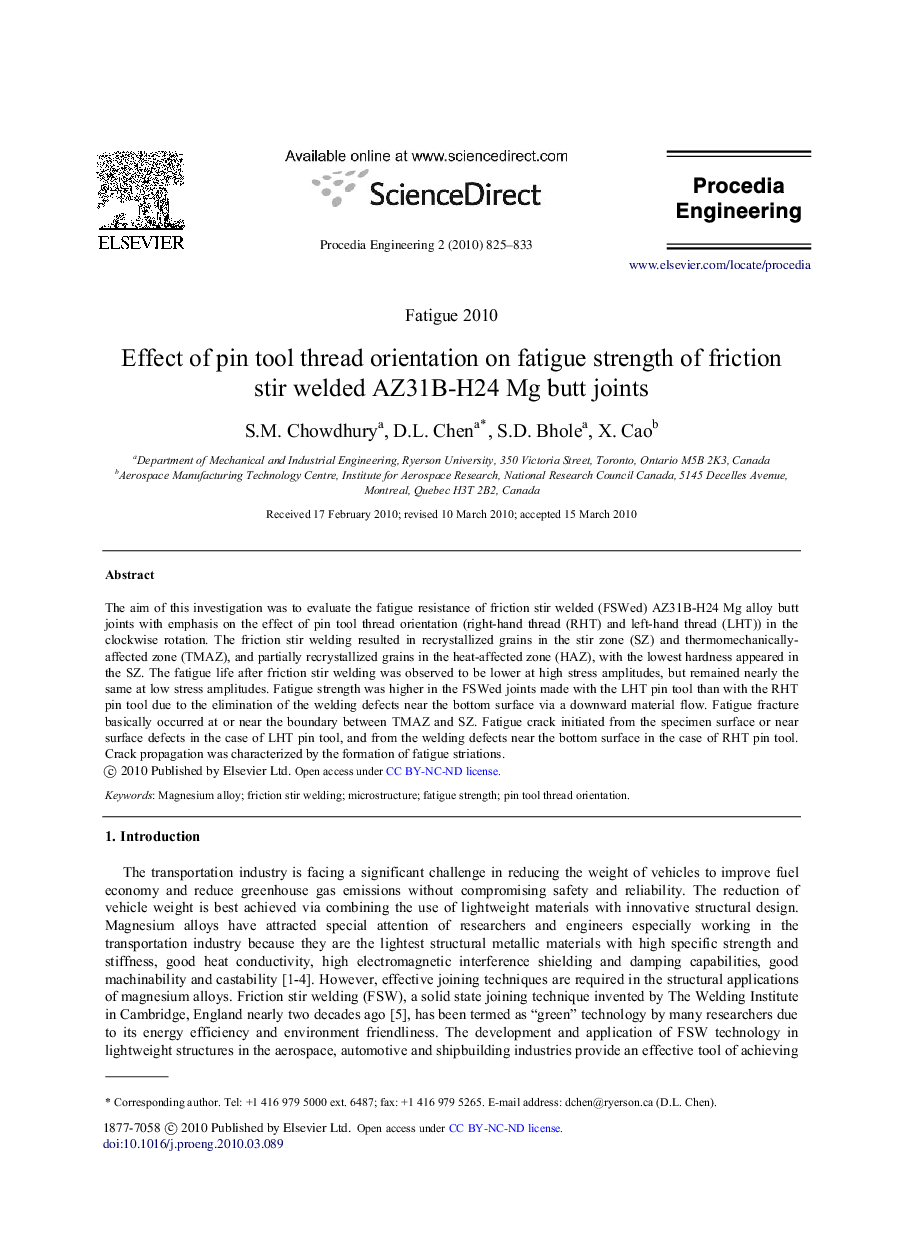| Article ID | Journal | Published Year | Pages | File Type |
|---|---|---|---|---|
| 864676 | Procedia Engineering | 2010 | 9 Pages |
The aim of this investigation was to evaluate the fatigue resistance of friction stir welded (FSWed) AZ31B-H24 Mg alloy butt joints with emphasis on the effect of pin tool thread orientation (right-hand thread (RHT) and left-hand thread (LHT)) in the clockwise rotation. The friction stir welding resulted in recrystallized grains in the stir zone (SZ) and thermomechanicallyaffected zone (TMAZ), and partially recrystallized grains in the heat-affected zone (HAZ), with the lowest hardness appeared in the SZ. The fatigue life after friction stir welding was observed to be lower at high stress amplitudes, but remained nearly the same at low stress amplitudes. Fatigue strength was higher in the FSWed joints made with the LHT pin tool than with the RHT pin tool due to the elimination of the welding defects near the bottom surface via a downward material flow. Fatigue fracture basically occurred at or near the boundary between TMAZ and SZ. Fatigue crack initiated from the specimen surface or near surface defects in the case of LHT pin tool, and from the welding defects near the bottom surface in the case of RHT pin tool. Crack propagation was characterized by the formation of fatigue striations.
